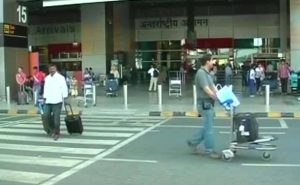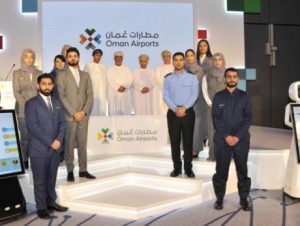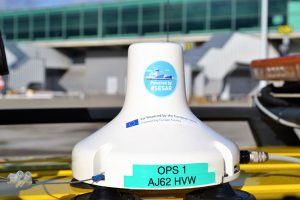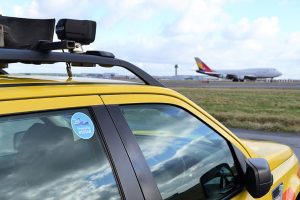A holistic approach to a seamless passenger experience
Passenger experience is being left behind in the technological revolution that is streamlining most other sectors of airport operations. Human Recognition System’s Simon Meyer tells us more about what the passenger wants and how airports can meet their demands.
 STRESSFUL SITUATION: A lack of information can make the passenger feel like a pawn in a game of chess between airlines and airports
STRESSFUL SITUATION: A lack of information can make the passenger feel like a pawn in a game of chess between airlines and airportsIn order to react to the challenge of processing growing passenger numbers through the existing airport infrastructure, the aviation industry requires significant change. Global passenger traffic is expected to double by 2035, reaching 6 billion passengers1, so it’s no surprise that airport technology is one of the fastest developing aspects of the entire industry. But despite the surge in innovation, very few of the changes being made focus on improving the passenger experience.
Despite passengers being the main reason for the existence of airports, most have come to expect long queues, delays and, more often than not, a stressful experience at the airport. In addition, with a backdrop of enhanced security requirements, unpleasant passenger experiences are on the increase. Lack of information provided by the airport can make the passenger feel like a pawn in a giant game of chess between the airport and the airline.
The commercial impact of stressed, time-poor passengers is a reduction in their likelihood to spend in the airport environment, resulting in lower revenue for the airport owners.
Adapting to ‘The Information Age’
To improve the passenger experience, communication between airport, airlines and passengers will have to improve. In this digital, hyper-connected world – described as ‘The Information Age’ – customers expect real-time updates. Consider the level of service offered by other companies, like Amazon, who offer personalised customer journeys that provide experiences and content that not only informs, but engages customers at every stage. Despite this increasing expectation, customers of airlines and airports are subjected to an impersonal and chaotic ‘one-size-fits-all’ service. Airports are going to need to up their game as passengers increasingly seek a seamless, personalised and hassle-free travel experience.
The recent IATA Global Passenger Survey2 of 10,675 people across 153 countries revealed that passengers are quite specific about the technological enhancements they wish to see prioritised. They expect technology to give them more “personal control over their travel experience.” This is unsurprising, echoing the levels of personalised service that customers are used to receiving from other service oriented businesses.
A specific improvement the survey highlighted was the need for real-time information to be sent directly to personal devices. Passengers want more information to help them plan their journey through the airport, with 51 per cent wanting to be kept informed of wait times at security and border control, and 58 per cent wanting to be kept informed of wait times at arrival customs. However, airports and airlines can only directly inform them about parts of the journey, which begs the question; does the passenger want alerts from the agent, airport and every airline they fly with?
Greater automation of airport processes was also high on the wish list, particularly at security and border control, which are described by respondents as “the biggest pain points”. Additional requested developments include a single identity token for all travel processes with biometric identification being the favoured solution for 64 per cent of respondents.
Creating a digital identity
So how do we go about delivering on the demands of the 21st Century passenger? Airlines and airports currently operate as separate entities, resulting in two alternative views of the passenger journey which is hindering industry progression in terms of customer service.
The integration of airline and airport data through passenger automation technology is imperative to markedly improve the situation. Data-sharing enables a holistic view of the passenger’s end-to-end journey, which can be used to maximise operational efficiency through a reduction in queues and delays, and, perhaps most importantly, improve customer satisfaction – a valuable end goal for all parties.
This goal can be achieved through utilising the ‘Passenger Operational Database’ (PODB) -data automation technology that holds information in real-time about each passenger. Through this ‘digital passenger’, airports are able to treat the passenger as an individual and offer a truly personalised service. In turn, this provides increased scope to enable on time departures.
Using this data management system, airports and airlines can proactively engage with the passenger. Take a standard journey of a passenger through an airport. The PODB will pick the passenger upon entry to the airport, warn them of queues in security and which gate they will need to go to, help direct them through the airport smoothly to maximise their time in the retail environment at the airport and even encourage spend with special offers. Armed with more information, the passenger can decide how to spend their time in the departure lounge rather than queuing. The challenge here is overcoming the ownership issue of the passenger, do they belong to the airport or the airline or both? Deciding to jointly own a passenger will improve services and feedback for both parties.
Insight will lead to industry transformation
Ultimately, the industry needs to re-think its current customer service strategies in line with what the passenger expects. The service industry is moving quickly to personalise every step of the process but the aviation sector is a step-change behind. For the industry to progress, passenger data must be shared between the airline and the airport to provide in-depth insight into passenger preferences and expectations and bring the digital passenger to life. The projects Human Recognition Systems has and continues to work on will help drive standards, as well as providing both acceptance and evidence that this transformational change of approach ultimately benefits the airline, the airport, and most importantly the passenger.
source : https://tinyurl.com/ycgb2ttk







